 |
 |
This site is dedicated to the Honda Novio and the Honda Amigo, also called Honda PF50. Honda started the production of these 4 stroke mopeds in the early 70's.
Honda made a whole line of mopeds which all look very alike, the name of these mopeds all start with a P and have a 50 in it: the max CC of these mopeds.
The moped which started the P-line is the P50.

It is a small moped with the engine mounted at the reartyre, so there isn't a lot of maintenance needed for the transmission.
After this one came the PS50, the engine is shifted to the middle of the moped and it has 3 handgears. There are a number of submodels of the PS: the PS50J, the PS50N, the PS50L and the PS50K.
The PS50J has an overhead camshaft and an aluminum cylinderhead. This moped is made in red or gray and has a small gray fueltank. The rear fork is made of plate steel and the final driven sprocket is mounted with a circlip.
The PS50N has a round fuel tank with chromated side panels. The colour of the moped is red.
The PS50L has a chromated front fender, a tubular rear fork and the final driven sprocket is mounted with bolts. This model was made in 3 colours: yellow, blue and brown.
The last model is the PS50K, made in black, yellow and brown and with an engine which is very similar to the one used on the PF50: overhead valves and a trochoid (star shaped) oilpump.
Before Honda started to produce the PF50, they made the PC50, which uses the same engine as the PF50. The first PC50 was made in 1968; the first model, the PC50J, has an overhead camshaft (in the cylinderhead, which is made of aluminium).
The next models PC50B (1970), PC50L (1970) and PC50K have overheadvalves and pushrods as the PF50, this was done to achieve more power in the lower revolution region. These mopeds also have a cylinderhead made of cast iron. The fuel tank sits beneath the saddle of the PC50 and the suspension at front is made with a swingarm. All these models don't have suspension at the back.
Since the PC50B, Honda changed the front suspension into a telescopic suspension. From the PC50L on, the fuel tank is kicked to the back of the moped.
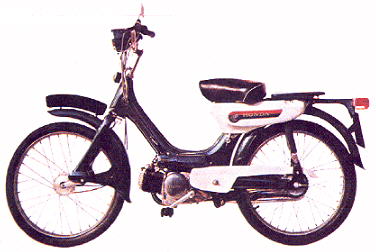
Honda PC50J
Honda started in 1971 with the PF50. The first moped that came onto the market is the Amigo.
The Amigo is heavely based on the PC50, it even comes with almost the same engine as the PC50K, B and L, with the difference that the cylinderhead is made of cast iron instead of aluminium. The engine of the Amigo has a lower compression ratio than the PC50K and B (but the same one as the PC50L) and is fed with a different carburettor. The fuel tank sits completely under the rear carrier.
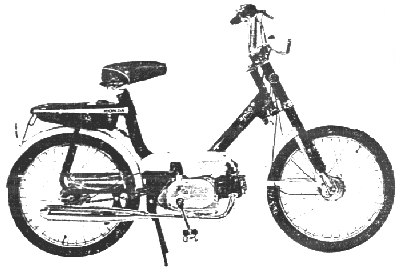
Honda Amigo
Honda has introduced the Amigo in 6 countries: Belgium, Denmark, England, France, Italy and Netherland. There was also an export model.
The successor of the Amigo is the Amigo-R. This one is identical to the Amigo, except that this one does have suspension at the back.
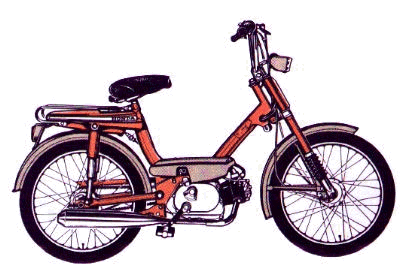
Honda Amigo-R
This time, Honda skipped Italy and started to ship the Amigo-R to Portugal, together with Belgium, Denmark, England, France and Netherland. In France were 2 models, the standard Amigo-R and the Amigo-R RDX, which uses a different headlight.
It didn't take long to bring out the Novio-R, Honda shifted the fuel tank to the front this time, the rest of the moped remained unchanged.
It seems that the sales got smaller, the Novio-R was introduced in only 4 countries: Belgium, England, France and Netherland.
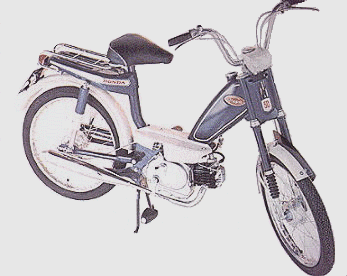
Honda Novio-R
The best known configuration of the PF50 family is the moped with a 4 stroke engine. There are also models with a 2 stroke engine, but as I never came across such a model. I don't know a lot about them. I had a picture send of a 2 stroke engine from a Honda Amigo II.
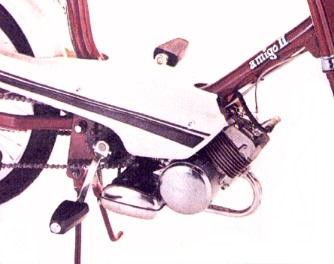
Honda Amigo II 2 stroke engine
In 1977 Honda stopped producing these mopeds.
After the PF50, Honda started with the production of 2 stroke mopeds, the PA50 (Camino) is the first (the Amigo II excluded) 2 stroke moped that Honda made. The PF50 is more or less the predecessor of the PA50, you can notice this because a lot of smaller parts are identical to those of the Camino.
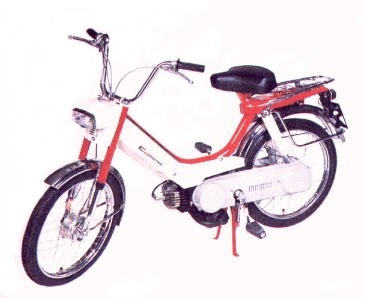
The Honda Camino (2 stroke)
These parts are exchangeable because both models were manufactured in Belgium and a lot of parts came from the same suppliers.
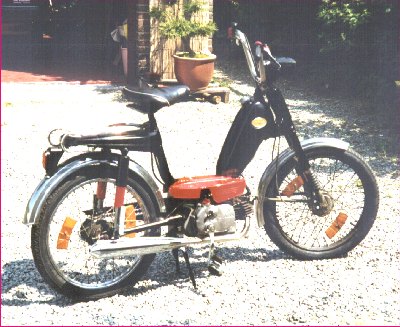
Repaired Honda Novio-R
The moped on this picture is mine. It is probably built in '72 and is now completely renewed. The colours are not the original ones, when I got this moped it was in such a condition that I had to repaint it. The original colour was pastel shade blue. On the maintenance page you can find the most problems that you encounter with these mopeds. I have used all the methods described their myself, so they should work. Why this website? I have made this site because I couldn't find any information about the Honda PF50 on the Internet. If anyone has comments or supplements concerning this text, then please send them to me. My E-mail address can be found at the bottom of every page.
I had to replace a lot of parts, such as the exhaust, cables, pedals, contact breaker points, the piston-rings and all the washers and gaskets. Most of these parts were sold as Amigo parts, but mostly it doesn't matter for which model they are made because they are identical.
A number of parts, such as the case of the headlight, are no longer sold: neither the official Honda supplier (Dendermonde-Belgium) nor the garage keepers in my neighbourhood could deliver this part. On such moment you have to use your wits (and some tape).
Honda seemed to have some trouble finding the right light system: there are at least 6 different light systems for the PF50.
When starting to work on your own moped, just keep in mind that some things on your moped can differ from the facts described on this website.
By the way, if you find some horrible mistakes on these pages, let me know. I don't use English every day...



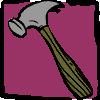
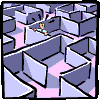

Home Close-ups Technical information Maintenance Links to related sites Guestbook
ã
Kris Maeswith the co-operation of Hans Hartman